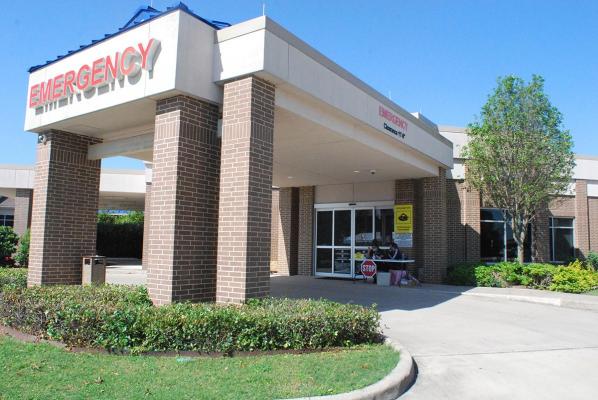Hospital slows fiscal hemorrhage
By John Meng, Publisher/Editor
After having two of its best fiscal years in 2018 and 2019, the Jackson County Hospital District is now wrestling with significant losses related to the coronavirus.
Fortunately, the Hospital District will be receiving more than a half million dollars in government grants to ease the financial pain. To help offset some of the losses, the Hospital District will receive $3,000 from the Texas Department of Agriculture, $84,000 from the Small Rural Hospital Improvement Program (SHIP), and $451,000 from the CARES Act.
“While these funds are greatly appreciated, they will not come close to covering the lost revenue, and the increase in expenditures during this time,” said Lance Smiga, chief financial officer of the Jackson County Hospital District.
According to Smiga, 2018 and 2019 were successful years for the Hospital District. Last year, for example, the hospital had a net income close to $430,000 which is significantly better than in 2017 after Hurricane Harvey. So far in the 2020 budget – October 2019 through the end of February 2020, the Hospital District had a net income of $523,000 and it was setting up to be an amazing year.
“The month of March we are posting a $74,000 net loss for the month, most of that at tributable to the decrease in outpatient revenue,” said Smiga. “We shut down in the middle of March and had to close down many of the services we offer. The revenue is just not there.”
Smiga explained that financial numbers for April are not available yet, but believes April and May numbers will be similar to what the Hospital District faced during Hurricane Harvey. “We posted consecutive months of $300,000 to $400,000 losses during Hurricane Harvey and I would expect something similar this time as well,” said Smiga.
There are some differences between the Hurricane Harvey-Coronavirus comparison. With Hurricane Harvey, the Hospital District was completely shut down, whereas there is not a total shut down today with the Coronavirus. Under the current situation, the Hospital District is still able to conduct Telehealth visits in the clinic and keep the in-patient going.
“Hurricane Harvey was different in that as soon as the storm was over, we could immediately open up. In our situation now, I think we’re going to progress more slowly before we can say we’re fully open. And, that’s the scary part because this could go into May but hopefully not into June or July,” Smiga said.
“As a community,” he added, “I think as we open back up and determine what we can tolerate and what we can’t, then we’ll see what’s the new normal. We’re going to have to see what that is.”
Smiga explained that as the Hospital District prepares to open up its services, the various departments will be reviewing its services and how to operate efficiently in a ‘post-COVID’ environment.
“The Telehealth is a big hit and we’re definitely going to continue that,” said Smiga. “Telehealth works well for the clinic. If we don’t have to bring every single person into the clinic, then we don’t have to. That not only helps us as providers by not being exposed but also protects other patients from being exposed in the waiting room.”
Telehealth is the distribution of health-related services and information via electronic information and telecommunication technologies. It allows long-distance patient and clinician contact, care, advice, reminders, education, intervention, monitoring, and remote admissions.
Tom Engels of the Health Resources and Services Administration (HRSA), an agency of the U.S. Department of Health and Human Services, also recently praised the Telehealth system.
“As the nation combats COVID-19,” he said, “Telehealth is increasingly instrumental and effective as a tool to provide healthcare for patients across the country, especially the most vulnerable.”
Several of the government grants received by the Jackson County Hospital District specifically help hospitals in rural areas to establish and expand Telehealth services.
For example, the Federal Office of Rural Health Policy (FORHP) grants awarded more than $11.5 million from the CARES Act to the 14 Telehealth Resource Centers (TRCs) to provide support as they combat COVID-19. The TRCs provide expertise and customized Telehealth technical assistance throughout the United States and its territories, while also acting as a clearinghouse for Telehealth research, program design and implementation.
“Providing the TRCs with this additional funding enables them to expand their ability to provide technical assistance to communities in need,” said Engels.
While the government grants are appreciated in Jackson County, Smiga knows they still have to weather this particular storm.
“Our staff is eager to get back to full strength,” he said. “I think that once we finally hit the ‘go’ button, people are going to be ready to go.”

